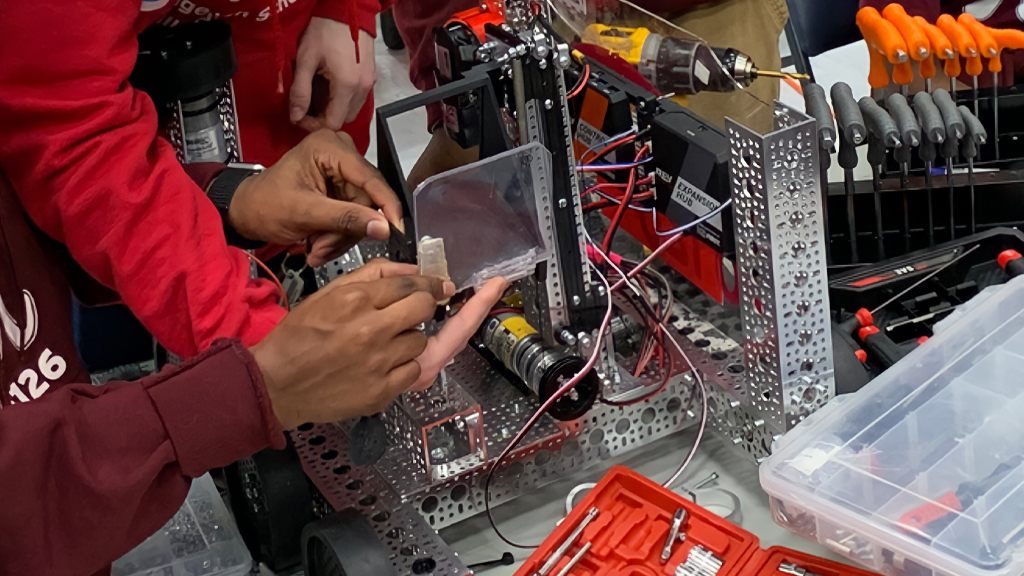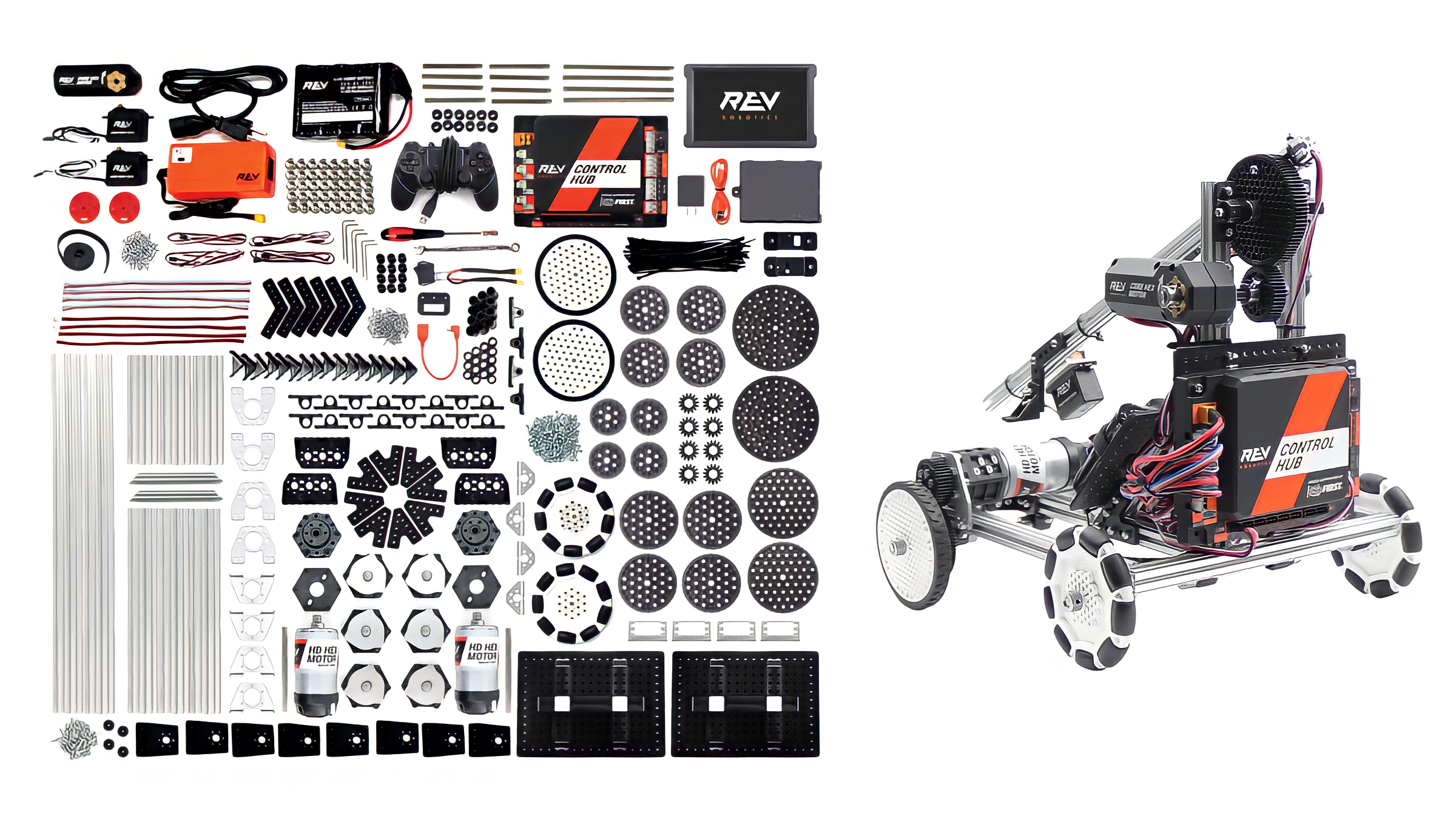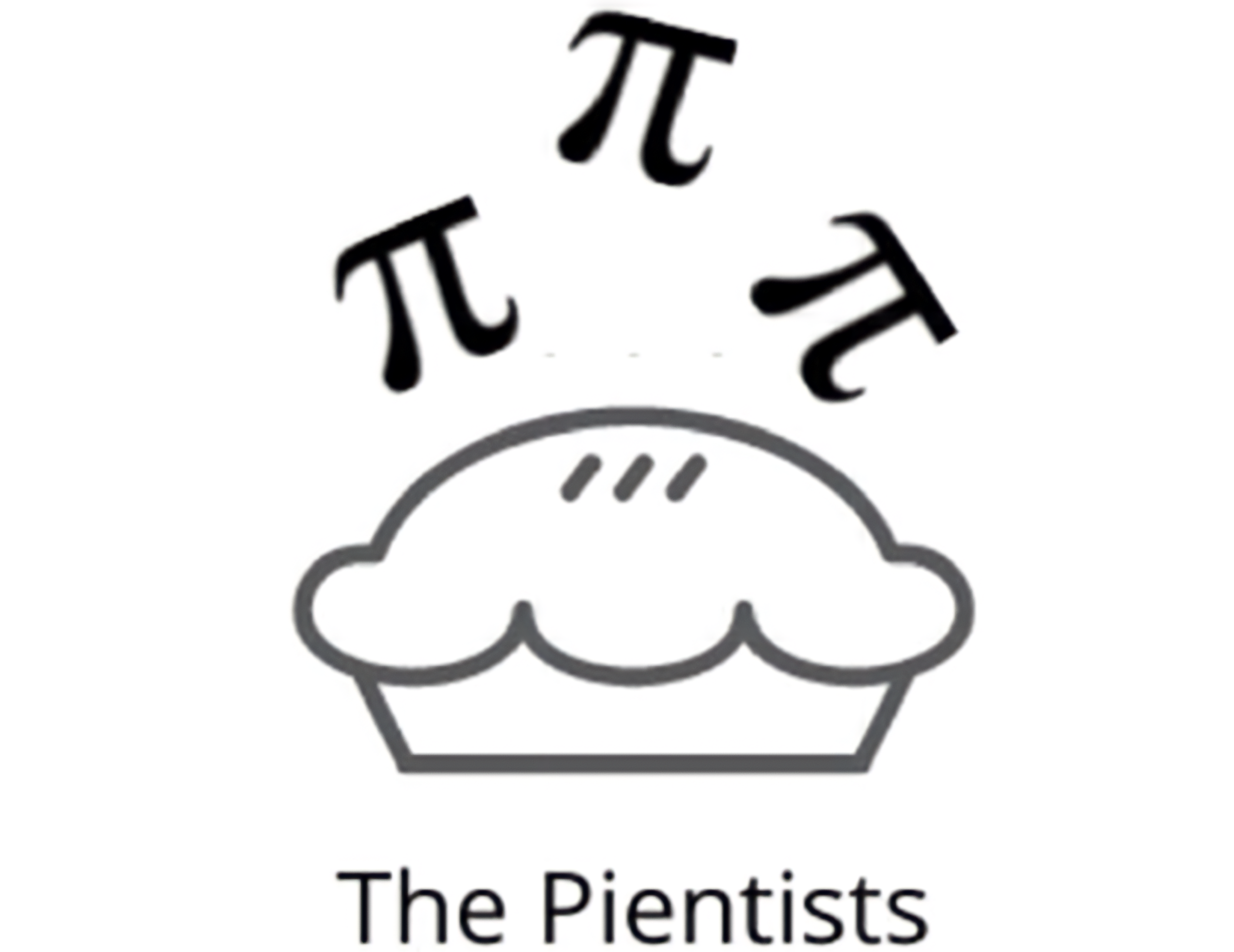Feature
Connecting a Community Through Computational Thinking and Robotics
Connected Science Learning February–March 2023 (Volume 5, Issue 1)
By Robin Jocius, Jennifer Albert, Rachana Bhonsle, Deepti Joshi, W. Ian O’Byrne, and Melanie Blanton

Computational thinking (CT)—developing skills to approach problems systematically in ways that mirror computer science (CS) practices—has been proposed as an essential skill for students to meet the demands of a 21st-century world and workplace (Wing 2006). In particular, the CT concepts of pattern recognition, abstraction, decomposition, and algorithms are adopted from the software development process and can be integrated within the core content areas of mathematics, ELA, social studies, and science, which can enable teachers to infuse CT into existing standards and curriculum. Research has demonstrated that early exposure to CT and CS in the K–12 grades is critical for building a more robust and diverse computing workforce (Guo and Ottenbreit-Leftwich 2020). Further, building a strong foundation of CT skills can help students build collaboration, critical-thinking, and problem-solving skills that translate across contexts and disciplines (Code.org, CSTA, and ESEP Alliance 2020; Lee and Malyn-Smith 2020).
The Infusing Computing project was a four-year researcher-practitioner partnership that supported more than 350 middle and high school content-area teachers (science, math, ELA, social studies, and related arts) in learning to infuse CT into their disciplinary teaching. As part of an intentional effort to sustain the project after the grant ended and to help teachers address unmet needs in their communities, the final year of the project focused on teacher-designed projects in the Infusing Computing (IC) Partner Grant program. In this article, we describe how one teacher partner, Rachana Bhonsle, used her IC Partner Grant to design and implement an after-school, mentor-based robotics program to connect in-school and out-of-school learning to raise awareness about the importance of CT and CS education.
Infusing Computing
From 2017 to 2021, during weeklong summer PD workshops and monthly academic-year activities, Infusing Computing teacher partners learned about CT, collaborated with content area colleagues, designed CT-infused curriculum, and considered ways to expand access to CT and CS education within their schools and communities (see Figure 1 for an overview of the project). Project goals included increasing access to CT and CS education by “demystifying” CS and CT (Ryoo 2019), supporting teachers through sustained and ongoing CT PD (Ketelhut et al. 2020), and building a community of practice (Lave and Wenger 1991).

Click here for larger image
The work of sustaining a robust community of practice was particularly important for this project, which drew teachers from across two southeastern states and included many teachers from rural areas that often lack access to computational tools, training, and resources (Leonard 2018). We worked to bring teachers together over sustained periods of time to build relationships that would continue even after the life of the grant.
During the summer workshops, teachers began each day by participating in programming bootcamps that featured Python or Snap! (a block-based programming tool). The goal of the bootcamp was to give teachers hands-on experience with coding tools from a learner’s perspective. Teachers who had never programmed before, or had very little experience, worked with Snap! and learned the fundamentals of block-based programming. Teachers with previous programming experience—or those who knew that their students were ready for an additional challenge—chose to attend the Python programming sessions. Teachers in both groups learned all the basic programming concepts (e.g., defining variables to store data, decision-making structures, loops for repeating the same code several times, etc.) and learned how to use collaborative computing tools and structures like pair programming, which are key components of the ISTE Computational Thinking Competencies (ISTE 2019).
Then, in content-area groups, teachers learned how to connect content-area standards and learning goals to CT concepts such as abstraction, algorithms, decomposition, and pattern recognition (Jocius et al. 2020). In the afternoons, teachers designed CT-infused lessons addressing content-area standards. In addition to the summer PD, teachers also engaged with each other and members of the research team through monthly webinars, a podcast series, informal messaging, and networking through the project website and a Slack channel. Teachers were also invited to return each summer for additional PD. This continued work over time helped build a community in which teachers were able to discuss and evaluate instructional approaches for CT infusion and share ways to foster more inclusive computing learning environments (ISTE 2019).
In the final year of Infusing Computing (2021–2022), the project team explored a method for sustainability that would go beyond offering another year of PD. Our goal was to sustain CT infusion beyond the life of the grant in a way that would address unfulfilled CT and CS education needs in their schools and communities. After discussing different ideas with teacher partners, we developed the IC Partner Grant program and invited all teachers who had attended multiple workshops to apply for funds. The application required an overview of the project goals, a budget, and a letter of support from the school or district. Project team members offered IC Partner Grant application workshops and one-on-one assistance for teachers as they conceptualized and created budgets for their work.
In total, 10 individual teachers and 3 teacher groups submitted proposals. All proposals were funded and each individual or group received $5,000–$10,000 to implement their projects. Projects included after-school and community-based activities to connect and build synergy between in- and out-of-school learning, CT-infused curriculum development, and CT training for school and district colleagues. Community-based activities included the development of competitive robotics and computer science teams, the design of STEM and CT outreach events, and CT training for families. In the following sections, we highlight Bhonsle’s work in designing a mentor-based robotics program that built support in her community for CS education.
A Case Study: From CT Infusion to a Mentor-Based Robotics Program
Rachana Bhonsle is a high school science teacher with 23 years of teaching experience who attended Infusing Computing summer workshops in 2019, 2020, and 2021. She teaches at a high school located in a rural area of a southeastern state. One hundred percent of Colleton County High School students receive free or reduced lunch, and students typically perform below average on standardized tests (33% met proficiency standards in Algebra I in 2019). She originally chose to attend Infusing Computing workshops because she wanted to increase students’ access to computer science education since her school did not have extensive CS coursework or after-school learning opportunities.
After her first year of the PD, she began building CT into her science curriculum, with a goal of using CT concepts and vocabulary in one particular lab activity. As she mentioned in reflections on her teaching, she brought CT in across multiple content area learning goals and projects:
"As I taught certain lessons, I realized the competence of CT can be used for understanding the rationale behind the periodic table and algorithm was used for understanding the solution, decomposition was used for counting the items in a given formula, and abstraction is used to hide the complexities of thermodynamics."
Bhonsle also emphasized the role of CT in helping her students tackle real-world problems in other areas of their lives: “They are able to analyze the small chunks individually with the previously encountered problems, they focus on the main components and leave the rest, and they are able to come up with the step-by-step process to solve the chunks one at a time.” This led her to recognize a critical need to go beyond the confines of the classroom to expand students’ access to CT and CS education. As she said, “Within the classroom, learning takes place, but it is not authentic. They learn different concepts but when they go outside the school building and school district, more learning takes place ... looking at different opportunities outside school helps kids see other options.”
Bhonsle’s IC Partner Grant project aimed to engage students in authentic collaborative coding tasks and expand the science and engineering practices they learn in class through the start of her school’s first robotics program. A crucial component of the program was to design mentoring experiences for elementary and middle school students interested in computer science and robotics, which would build a “pipeline” of students interested in coding. She hoped that this work would raise awareness about CT and CS education within her community and help her and her students advocate for expanding computer science education learning opportunities within and beyond the school district.
Students participated in the FIRST Tech Challenge, which is a student-centered program that tasks participants with designing, building, testing, and programming autonomous and driver-operated robots (see Figure 2). A core component of the program also involved mentorship of elementary and middle school students interested in robotics. As she explained the project to community and district leaders, Bhonsle shared that the goals of the program were “to inspire young minds to use computational thinking in robotics and engaging them in exciting mentor-based programs, as well as building “engineering skills for problem-solving, enhancing creativity, and fostering well-rounded life capabilities, including critical-thinking skills, confidence, communication, teamwork, and leadership.”

Building Multi-Faceted Systems of Support
Bhonsle’s work to design and set up the robotics program involved bringing together multiple stakeholders, including her school district, community members, students, and families. In addition to planning with the Infusing Computing research team, she connected with other Infusing Computing teacher-partners who had built similar programs at their schools. An important first step was to work through many of the logistical issues, including the types of materials to purchase, number of adults needed at each session, and the best types of software and hardware. Table 1 includes a list of materials that were initially purchased to support the robotics team.

Bhonsle purchased a competition kit bundle from FIRST Tech Challenge (see Figure 3) to begin building momentum for the project and give the club members a complete set of materials to begin working with. She also talked with others who had begun robotics programs about materials that had worked best for their groups and chose to purchase a set of tools—including the laptop, printers, tools, wagon, and accessories—that could be used year after year to sustain the robotics program. She also specifically purchased safety materials, including a first-aid kit, for the exclusive use of the club. FIRST requires all participants (students and mentors) to complete safety training and has policies and procedures for reporting dangers and injuries. Additionally, students must wear goggles when working on or operating their robots.

One unforeseen challenge was difficulty in selecting a date and time for the group to meet, especially since many potential club members had previous after-school commitments. Eventually, Bhonsle decided to hold meetings on the weekends, which allowed for a larger number of students to be involved, including those who were home-schooled or attended private schools and those students with previous after-school commitments. The weekend timeframe also allowed students to spend longer blocks of time working on their projects.
To support her club members throughout the process, Bhonsle built a multifaceted system of support, including a Google Classroom site to share club meeting information, upcoming events, successes, and opportunities to reinforce school-based learning through the work of the club. Students also posted regularly to the site to share information and communicate about team goals and activities. For example, after the group worked on the team name (Pientists) and logos during a meeting (see Figure 4), one student posted the logo along with a request for feedback in the Google Classroom site: “This is the logo we came up with during Saturday’s practice. Any general thoughts?” The Pientists also named their robot Apple Pie because it “gave them slices of productive struggle” during the robotics season.

Bhonsle described multiple connections between in-school learning and students’ experiences with the robotics club, including the development of interpersonal, collaborative, and cognitive skills. As the Pientists designed, iterated, and collaborated to create their robots, they developed knowledge “about the scientific method—how it works, what is the dependent variable and what is the independent variable and how the science, engineering, and designing process takes place, which is an important part of science. They learned just by hands-on activities; there were no tests, no written assignments.”
Program Impact: Connecting Community and Imagining New Possible Futures
A key element of Bhonsle’s work was raising awareness about the importance of CS and CT education and forging connections in her community. Students from the robotics team worked with elementary and middle school students as part of an effort to connect “the community and [bring] all robotics kids together,” which was successful in building a core group of students who were excited about robotics and wanted to continue to expand their knowledge. The Pientists’ community outreach work was recognized with the state-level FIRST Robotics award for the team that best connects with their local STEM community.
The robotics team also raised awareness about the need for CS education resources by talking with school and community leaders, including the school board. Students played critical roles in this advocacy work; as Bhonsle noted, participation in the project increased students’ confidence in themselves and their own power in making change within their communities. She described how one student who was previously very quiet and hesitant to speak in front of others was “the one to stand in front of our board members and talk about that we need more computer programming classes in high school.”
Students also participated in a showcase in which partners shared their experiences with the IC Partner Grant program. In a virtual presentation, three of the robotics club members provided a demonstration of their robots, talked about the development of their CT and CS knowledge, and shared their experiences with mentoring younger students. Bhonsle also pointed to the value of the robotics program in helping students learn “how to organize data, findings, and thoughts,” as well as collaborating with others to “identify obstacles and barriers to success, then to determine and use strategies to address these challenges.”
The project also supported students in considering new possible futures in previously unknown fields, such as robotics engineering, software development, and software testing. Bhonsle noted that exposure to CT and CS education was particularly important for students who may not have been successful in more traditional school settings. As she said, “They can gain confidence in themselves, which is very important. They can also do this type of stuff—you don't have to have a 4.0 GPA in order to do programming or in order to drive a robot.” One student told her that he wanted “to just complete my high school, I will get my diploma and then I'm not going to college,” but as a result of participating in the project, “he is determined to go for at least two years of college, so that he can get a diploma and learn about automatic models.” Another student was inspired to pursue a career in biotechnology, and yet another, who wants to pursue a career in culinary arts, began to consider how CS might enable greater efficiencies in the kitchen and how he “might build a robot to do that test for me.”
As a result of Bhonsle’s work and the recognition students received from their successful competitions, her school district asked her to submit a plan for integrating computer science coursework across the curriculum. More courses will be added to the district’s offerings, which she hopes will bring even more opportunities for students to engage in programming and robotics. As she said, “It's a wonderful experience to work with youth and then have them like you see their light go off and they believe that they can do it.”
Conclusion
Bhonsle’s work showcases the power of using computational thinking and computer science education as a tool for connecting communities. Building on her knowledge of CT and her experiences in infusing CT into her science curriculum, Bhonsle created a program that raised awareness of the importance of CT and CS education within her community, built a pipeline of students interested in CT and CS, and created lasting change in regard to access and opportunity to participate in CT and CS. Most importantly, her work provided students with opportunities to imagine new possible futures where computer science plays a key role in shaping their postsecondary education and career options.
This work illustrates the power of professional learning experiences that center teacher autonomy and expertise. While Infusing Computing was originally designed to build a community of content area teachers to support CT infusion into content area, the IC Partner Grant program afforded teachers the opportunity to shape their own projects that were responsive to the needs of their students and communities. As Bhonsle’s project demonstrates, teachers recognized the promise in building synergistic connections among school-based CT learning, out-of-school learning, and their communities. As educators within and across formal and informal learning environments envision and implement their own CT and CS education programs, they also create more authentic and meaningful opportunities for learners to develop essential 21st-century skills.
Acknowledgments
This material is based upon work supported by the National Science Foundation under Grants No. 1742332 and 1742351.
Robin Jocius is an associate professor at The University of Texas at Arlington in Arlington, Texas. Jennifer L. Albert is Director of the STEM Center at The Citadel - Zucker Family School of Education in Charleston, South Carolina. Rachana Bhonsle is a science educator and robotics coach at Colleton County School District in Walterboro, South Carolina. Deepti Joshi is an associate professor at The Citadel - Swain Family School of Science and Mathematics in Charleston, South Carolina. W. Ian O'Byrne is an associate professor at the College of Charleston in Charleston, South Carolina. Melanie Blanton is a doctoral student at Texas Tech University in Lubbock, Texas.
Computer Science Equity Inquiry STEM Technology Informal Education


